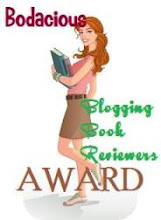John J. Fry, a professor of history and dean of faculty at Trinity Christian College, blends his love and knowledge of the American West with an exploration into the religious life of a cherished American pioneer in A Prairie Faith: The Religious Life of Laura Ingalls Wilder.
Told chronologically, Fry starts with the birth of Laura Elizabeth Ingalls to Caroline and Charles Ingalls in 1867. Chapter by chapter, the author discusses the important events of the time, the daily life of the Ingalls family and those around them, Wilder's writing, her relationship with Almanzo and Rose, her numerous trips, the popularity of the Little House series, Rose's contributions to the books, and the continued fascination with Wilder and her work. Woven through this in-depth narrative is Fry's argument that while Christianity was important to Wilder's life, it was not central, as proven by her practices and her stoic ideas.
I found A Prairie Faith fascinating and informative. It is a deeply researched, well-written biography of one of America's most beloved children's authors. Having read numerous biographies of Wilder's life, many cited in this book, I found Fry paid great attention to detail.
The thesis type format created a fair amount of repetition as Fry focused on his point that Christianity was important but not central to Wilder's life. The author reiterated examples to support that point, stating Laura and her family, then Laura and Almanzo, did not attend evening church services; Laura and Almanzo didn't attend services when they were traveling; and that neither of the Wilders became members of local churches despite being involved in civic organizations, some with religious ties. He cited changes between Laura's handwritten manuscripts and the finished product where the editor's hand changed scenes that surrounded some of Laura's experience with church and church members. He discusses that while Wilder prayed and read from the Bible regularly, she did not mention Jesus, and her stoic ideas fly against the dependence upon God and Savior to bring you through life.
With the limited amount of information available on this topic, Fry did a superb job of creating this biography of Wilder's life. Though I'm not sold on supporting the author's thesis, I'm happy to add A Prairie Faith to my collection of resources about Laura Ingalls Wilder.
Publisher: Eerdmans (February 6, 2024)
























































